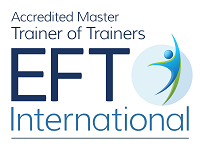
EFT Level 1 & 2 Training
Fri 09 Jan to Fri 27 Feb 2026
EFT Level 1 - Online
Fri 09 to Fri 30 Jan 2026
EFT Online Group Mentoring.
Wed 14 Jan 2026
Thu 22 Jan 2026
EFT Online Group Mentoring for Trainers
Thu 29 Jan 2026
Thu 26 Mar 2026
EFT Level 2 - Online
Fri 06 to Fri 27 Feb 2026
St Albans, Herts, UK
+44 (0)7811 484 673

Empowering a client with the Emotional Guidance System
One of the problems I often hear from EFT practitioners is knowing how to pace a client’s progress. Where a client has come in with a long running issue like chronic anxiety there’ll be much to tap on. How do you know your client is making progress as you peel away the layers?
Let’s put aside one session wonders. This is where big issues melt away with a short amount of tapping. They do occur, but complex issues rarely resolve fully in that way. If a person has spent years or a lifetime with a problem, it’s likely that the issue is underpinned with a web of beliefs. One session will not be enough.
So how do you pace their rate of change and help structure the work?
I love using the Emotional Guidance System by Esther and Jerry Hicks. I’ve shared about this scale before. This scale of 22 emotions provides an ever easing movement of emotion from top to bottom.
The list
- Joy / Knowledge / Empowerment / Freedom / Love / Appreciation
- Passion
- Enthusiasm / Eagerness / Happiness
- Positive expectation / Belief
- Optimism
- Hopefulness
- Contentment
- Boredom
- Pessimism
- Frustration / Irritation / Impatience
- Overwhelming
- Disappointment
- Doubt
- Worry
- Blame
- Discouragement
- Anger
- Revenge
- Hatred / Rage
- Jealousy
- Insecurity / Guilt / unworthiness
- Fear / Grief / Depression / Despair / Powerlessness
When climbing a ladder you wouldn’t dream of going from the bottom to the top in one step. It’s unrealistic. Similarly, with complex issues, a client is unlikely to go from the bottom to the top of this scale in one session of tapping.
So if in our client work we uncover a pocket of grief, clearly we help the person release that. However, it would be naïve to think that once the grief is cleared that the person is now fully at ease. There’ll be related aspects that take in emotions slightly higher up the scale. So after the grief is expressed, it might be that the person reveals an aspect of feeling hatred towards a key person in the story. Looking at the scale, they’ve shifted 3 points up the scale. This is healthy movement. We’re allowing space to release important feelings.
We’d continue in framing our session by asking and tapping on what shows up. However, as practitioners we’re not rushing to get to resolution. We show an awareness that there is likely to be worry and disappointment to come out before the person can move to a place of lighter emotion.
To be clear, I’m not saying that a person has to go through each single emotion in a methodical manner. They’ll move up a few steps at a time – whatever is natural and easy for them.
So this scale helps us to pace the client’s session, and expectations towards lasting change. You don’t force a client to work their way through the system in a controlling way. It’s, however, helpful to ask questions when they might have gone 7 or more steps up to uncover any hidden aspects. They’ll likely go up a few steps at a time. With this awareness, as practitioners we’re able to ask better questions and listen deeply to what the client is saying to uncover hidden aspects.
I love sharing about the Emotional Guidance System. There is plenty more to this list of 22 emotions than meets the eye. I’ve barely scratched the surface here. Do come and learn more with me on a webinar I’m running on 21 May at 4pm BST. The call will be recorded for you to keep.
HiM viewpoint: Steady steps through emotions leads to lasting empowering change.
Article Date: Fri, 10 May 2019
 Previous Previous | Next  |





